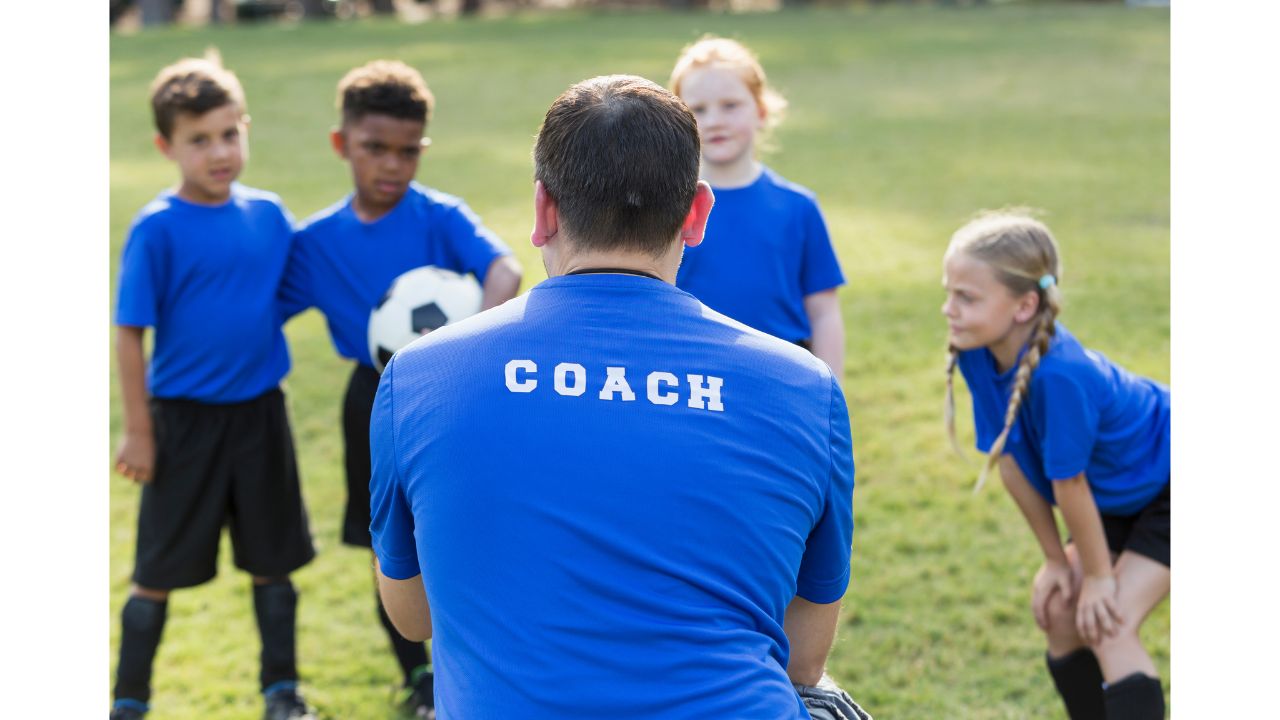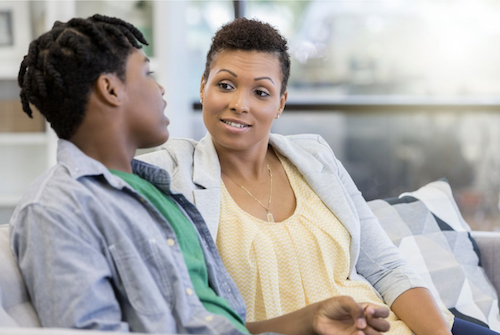How do we embrace the paradox of letting go to bring our kids closer?
With three teenagers of my own, I’ve been thinking about this question often. How do we navigate the push and pull of dependence and independence? It can feel like learning to dance – guiding your partner towards you, and then letting your partner go so that you can twirl back towards each other. Many of us wonder how to be a good parent when parenting is so full of complexities, no matter what age our children are.
The answers I keep coming back to are related to attachment theory. As human beings, we need to feel securely attached and safe in our relationships in order to grow and mature. As our children grow up, we need to shift our dance of attachment to fit their needs. We keep certain elements constant and adapt others to find new ways of staying connected with our maturing children.

When children feel that they can safely depend on us, they are more likely to mature and become independent, whether it be taking their first steps or learning to drive. Our job is to love and accept our kids as they are, fostering their own belief in themselves and their desire to keep growing.
Hold On To Your Kids
I recently read some chapters in Hold On To Your Kids: Why Parents Need to Matter More Than Peers by Gordon Neufeld, Ph.D. and Gabor Maté, M.D. and want to share their wisdom with you.
If you read only one paragraph, read this one from Neufeld and Maté:
“We need to release a child from preoccupation with attachment so he can pursue the natural agenda of independent maturation. The secret to doing so is to make sure that the child does not need to work to get his needs met for contact and closeness, to find his bearings, to orient. Children need to have their attachment needs satiated; only then can a shift of energy occur toward individuation, the process of becoming a truly individual person. Only then is the child freed to venture forward, to grow emotionally.” (p. 117)
When we offer our child our presence and warm acceptance as we provide support and guidance, our child will naturally move towards independence. Mixing in some fun and playfulness helps us get through the difficult moments and stay well connected to each other as well. If we are giving our child these opportunities for connection, we can trust nature to take care of helping our child grow up.
What steps can we take to participate in this dance of attachment?
Neufeld and Maté share four key ideas (pgs. 179-191) to help us ensure that our children attach to us instead of seeking attachment from peers and online spaces. In return, we enjoy their warmth and appreciation. We support them and orient them to the world so that they feel safe and confident to do that dance of explore and return, explore and return.
Here are the four key ideas that facilitate healthy attachment and help us parent well:
 #1: Get in the Child’s Face –or Space –in a Friendly Way
#1: Get in the Child’s Face –or Space –in a Friendly Way
#2: Provide Something for the Child to Hold On To
#3: Invite Dependence
#4: Act as the Child’s Compass Point
This blog is the first of a series in which I will share some thoughts about how to put these ideas into practice in everyday life. Today, we’ll explore the idea of “getting in our child’s face” in a friendly way.
Idea #1: Get in the Child’s Face –or Space –in a Friendly Way
Our children need us to continue to show delight when we see them and to offer warmth and affirmation as they get older. We may be tempted to focus on keeping them safe by saying no and guiding and directing as they become toddlers, elementary schoolers, tweens and teens. However, they also need us to keep that twinkle of warmth in our eyes when we see them, even during rough patches of parenting.
When our children are babies, we are drawn to their smiles, laughter, and desire to cling to us. Those lovely feelings of attachment give us the strength to get up with them in the night, change diapers, and deal with bouts of crying. However, as they become toddlers, our interactions become more corrective and directive in order to keep them safe from harm and establish routines.
We start to “be in their faces” in less friendly ways and they, in turn, offer us opposition and tantrums more frequently. Many parents call me when their children get to be age 3 or 4. They feel frustrated and uncertain about how to be a better parent without yelling. As we work together to use warmth, playfulness, and the element of surprise to warm up their connection with their child, we can reignite those feelings of mutual attachment.
Here are some easy ways to turn things around with a young child by being in each other’s face and space:
- Instead of “It’s time for lunch. Put away your toys and come eat!” –> Try “Come help me make the mac and cheese/sandwiches/ fruit plate. You can pour/stir/arrange along with me.” Invite your child to be close to you and work with you to get things ready so that they feel part of the process. Children naturally want to help at this age, so invite them in. Just be careful to not be too picky about how they choose to do the task at hand.
- Instead of “Stop fighting with your brother,” yelled from across the room. –> Try going over to the siblings, getting close to them, and saying something like, “Looks like you two are having a hard time. I’m sure we can figure out a way to solve this problem. What do you need each other to understand?”
- Instead of “If you can’t be gentle with the baby, I’ll have to go in the other room!” –> Try saying something like, “Come here and let’s see how the baby watches every move you make. What happens when you smile at the baby? Want to bring her a toy? Why don’t you cuddle up close to me and we can read a book while I’m nursing/giving her a bottle.”
Feelings of secure attachment then lead to greater peace, cooperation, and healthy maturation.
The same is true for the parents of teens I work with: When we create more opportunities for bonding without nagging, judgement and worry, our teens become more loving, respectful and cooperative. Pausing before we speak to think about how we are coming across can save us time and heartache. This practice helps us slow down and be more connecting than directing.
Here are some positive ways to be in your tween or teen’s face and space:
- Going on a car ride: “Want to be in control of the music?” Listen to what they are listening to and engage about what they like in the songs they play.
- Invite help and collaboration: “I’m making dinner. Come help cut/chop/wash/stir with me.”
- Don’t like their outfit? Try to focus on the one thing you do love about what they have done with their hair, makeup, accessories, shoes, etc. and comment on that.
- Dealing with a child who just wants to be in their room? Knock and ask, “Hey, I’m getting myself a seltzer/tea/glass of water, etc. Would you like me to get you one, too?”
- When your teen walks into the room, put down your phone or whatever you are doing and look them in the eye with a warm greeting.
Some simple mantras I often teach to help parents remember these strategies are:
- Connect, then redirect (from Dan Siegel and Tina Payne Bryson)
- Be playful
- Focus on the positive
- Invite your child to help you
- Use your imagination
- Collaborate and work together
- Get curious about what interests your child or teen
These strategies are helpful with all ages. Who doesn’t feel like cooperating more when someone connects with you first before offering some guidance? Making something fun helps most of us feel more engaged. When we are relaxed and happy, we are more open to learning new things. You can use these strategies with your partners and babysitters, too.
From Duty to Delight
With tweens and teens, we can get stuck focusing on kids’ “duties” – making sure our kids are doing their homework, participating in family chores, and not losing themselves in their screens. These interactions often result in power struggles and angry exchanges. We are “in their faces” with directives, critiques, and complaints, and no one feels happy. Instead, we need to make a conscious effort to offer support, encouragement, and unconditional love. We may still need to guide them to do their “duties,” but we will have more success if that is not our main focus of conversation. We need to delight in little moments with our tweens and teens to let them know we love them as they are at least as often as we guide them, if not more.
It can be hard to offer these spontaneous displays of affection when we are angry and frustrated. However, if we are not careful, this behavior on our part leads our kids to seek positive attachment with their peers instead of with us at a time when they are more vulnerable and in need of a secure home base. If we can make a conscious effort to “be in our child’s faces” with warmth, light conversation, and delight at their interests and unique and funny ways of being, our children will lean in towards us like plants do towards sunshine.
For stories and more specific guidance of how to shift ourselves back towards being in our kids faces with love and connection, click here. I work on this process with my clients who have young children through kids in their teens and twenties.
Want to keep reading? Read the rest of this parenting series for easy-to-apply insights and tips.
 Be the side of the swimming pool
Be the side of the swimming pool
 Act as the North Star for your child
Act as the North Star for your child
Stay tuned in coming weeks for blogs on the other 2 ideas!
Reach out if you want support.
If you need guidance, schedule a Clarity Call with me and we can design some next steps that best fit you and your family. We all have unique needs and styles of being. It feels good to have someone in your court to help you connect the dots, stay strong, and learn to trust as your children grow up. Your children will thank you for focusing on this dance of attachment with them through their love and connection to you. And you’ll have more fun along the way, too!
Who I serve: I coach parents from coast to coast in the US and internationally. Thanks to Zoom, I am currently coaching parents from Boston to Seattle, Connecticut to California, as well as New York, Ohio, and Colorado. I’ve worked with parents in Bermuda, Japan, Portugal, and Canada as well. I’m grateful for these global and domestic connections!







Leave A Comment